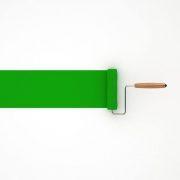DIY Non-Toxic Paint
If you want to make crafts focused on children with materials such as wood and want to add a touch of color, it is much better to use non-toxic paint, so that if they are put the craft in their mouth there is no danger. At unComo.com we explain how to make non-toxic wood paint. Reduce costs and produce your own version of this type of paint. You will only need some kitchen ingredients. Let’s do it!
- Collect plastic bottles. Squeezable ketchup or mayonnaise containers will be the ideal measure to carry out this activity, in addition to having the adapted liquid dispenser. When you finish the container, clean them thoroughly with warm water and soap.
- Before carrying out the activity, prepare the work area. Cover the surface with newspaper and remove all objects that may stain or break. Also, put old clothes that can be stained without problem.
- To make the color, you will need: measuring cups, a container and a blender (or a mixing spoon), as well as a funnel. We recommend that you make each color separately, so you can place them in each of the bottles you have.
- In the bowl, mix a cup of salt with one of flour and another of water. Using a blender or a large spoon, mix everything until you have a homogeneous paste and add a food coloring. For example, to give it a dark brown color you can also use coffee dissolved with water.
- Next, it’s time to apply a touch of color to the paste. How? Using food dyes. You will find these additives in any baking section of the grocery store. Add a few drops to the dough, mix and go verifying that the tone of the dough adapts to the one you want.
- Once you have the mixture of non-toxic paint made and with the desired color, place the funnel in the plastic bottle and pour the paint inside. Do it carefully.
- Ready! You now have your non-toxic paint to paint your wood crafts.
Tips
- It is good that after painting and applying the color you want, apply a little wood polish.
- You will need several coats to achieve a good color. Depending on how dry or humid the climate is, along with the number of layers used, the wood should be completely dry in about 3 hours.






